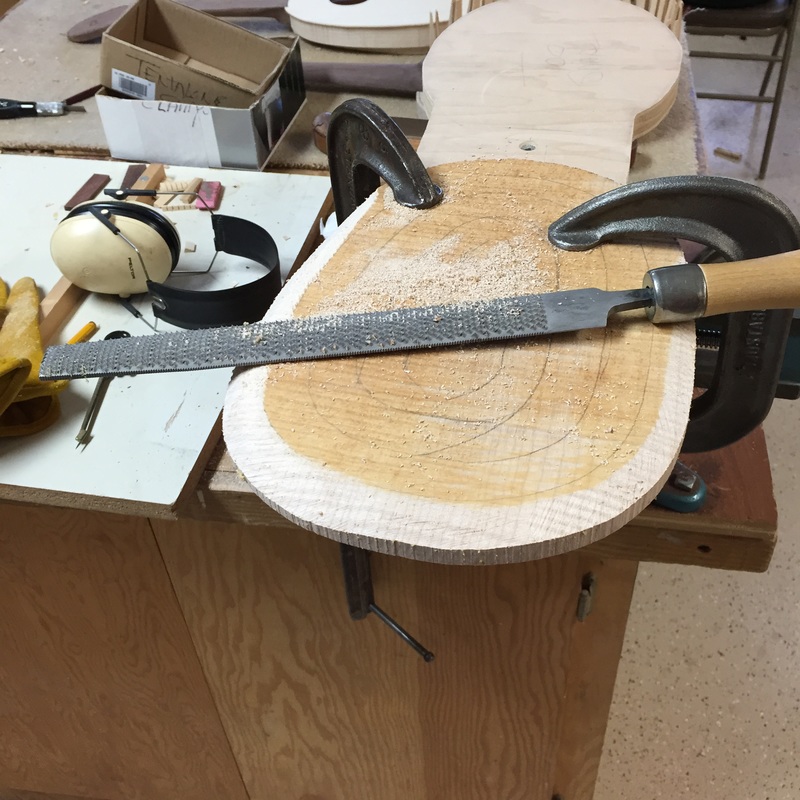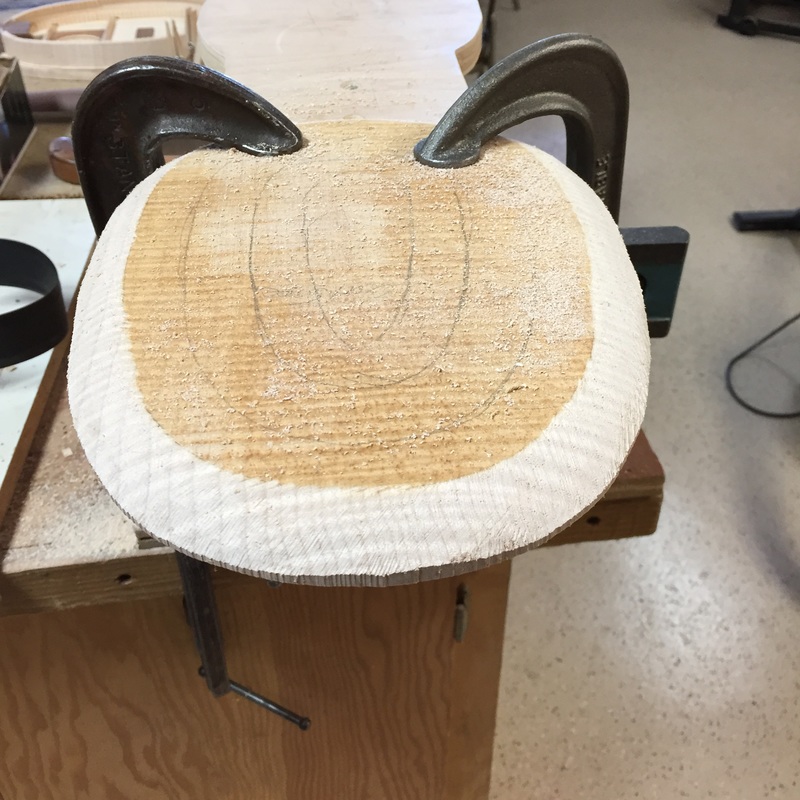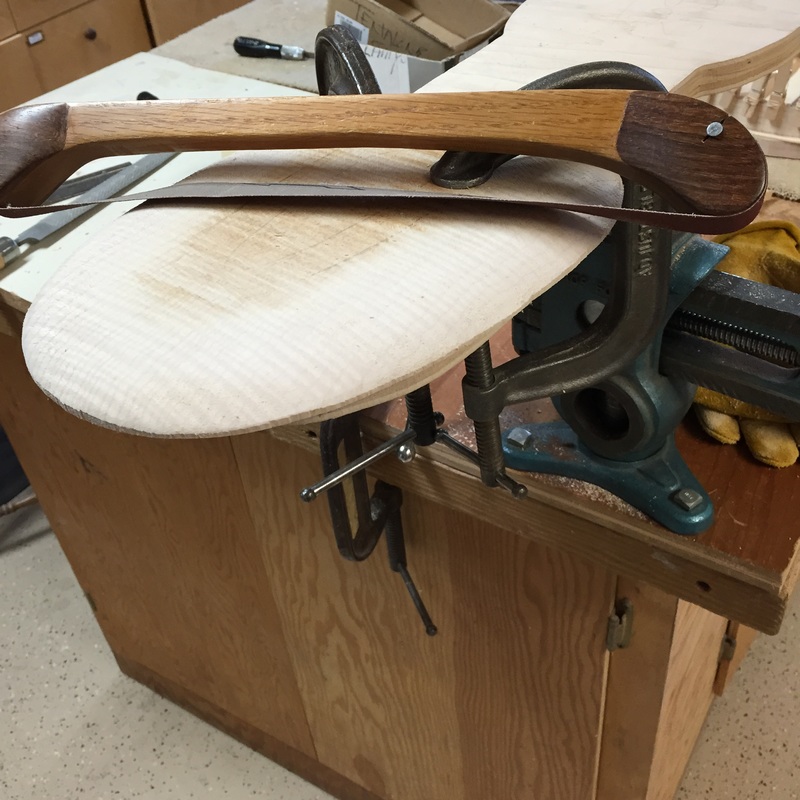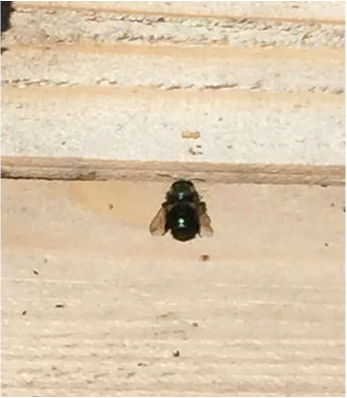IT WAS A LOVELY SUNNY DAY and I didn't bet as much back work done as I should have cuz I was watching the bees.
I got all the tentalones installed top and bottom, here you see just the top completed. Then I started carving the backs.
first you want to draw in the contour lines to guide you as you carve a symmetrical gently curving back. I start with a pretty aggressive rasp that hogs off wood pretty fast.
By the time you have faired in the third contour you are about there. Sandpaper will take you the rest of the way and the best way to do that is with the trusty bow sander. If you have not made one of these yet, get busy- just a wonderful fairing tool.
BUT ENOUGH WORK ON A SUNNY DAY. LET ME INTRODUCE YOU TO THE ORCHARD MASON BEE
BUT ENOUGH WORK ON A SUNNY DAY. LET ME INTRODUCE YOU TO THE ORCHARD MASON BEE
This shiny black beauty is a female Orchard Mason Bee just resting for a moment in the sun. She has just returned to the nesting colony from a flight to the blossoms gathering pollen and nectar. She will add it to a growing pile mixed into a lump in the back of the nesting cell and when she has enough food mixed up, she will lay an egg into the food pile. Then she gathers mud and walls in the food and egg. One of her thirty nesting cells completed.
They are marvelous pollinators of spring fruit, don't sting, easy to propagate. Look for my book on Amazon .com
"The Orchard Mason Bee" It will reveal all. You see there was a life before lutherie.
They are marvelous pollinators of spring fruit, don't sting, easy to propagate. Look for my book on Amazon .com
"The Orchard Mason Bee" It will reveal all. You see there was a life before lutherie.
And here is the nesting colony. Each bee selects one of those tubes and fills it with 6 to 12 cells in which her progeny will hatch, mature and hibernate over the winter to come out the next spring and repeat the cycle.








